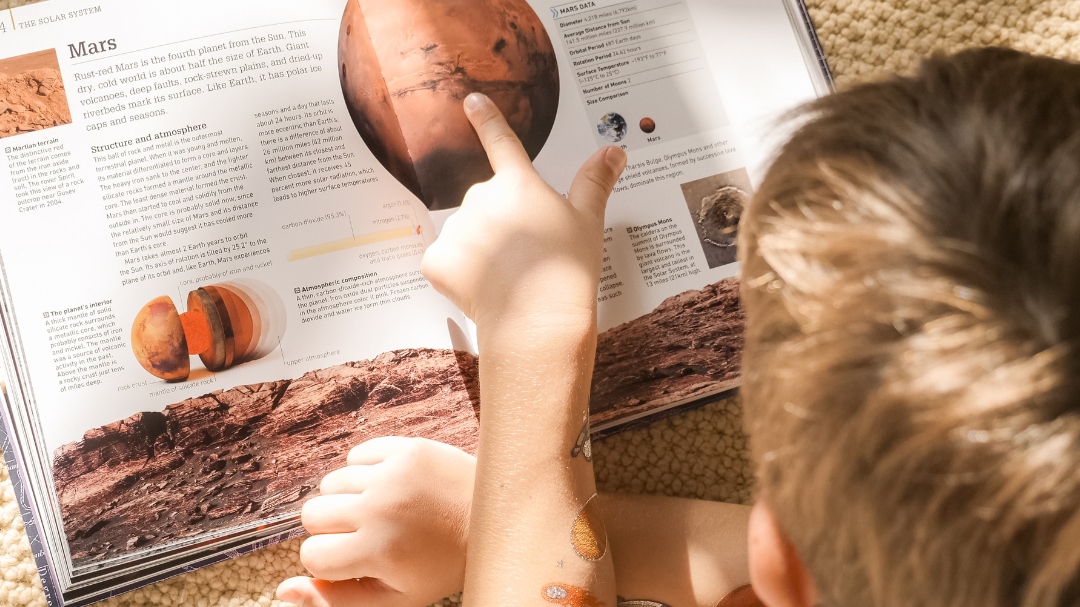Children love reading books. Fostering a love for reading books has many benefits in language development. This is especially true for AAC learners. In this blog, we dive into learning the essential reading skills that pave the way for a successful book reading experience with AAC users.
Conversations About Books & Reading
Books are a great resource to teach language and literacy to AAC users. Even before starting to read books to your AAC user, there are some conversations about books that you could have with them. These early conversations could consist of the following topics:
- Set up a reading routine
- How to look after books
- Bits about Books
These conversations help promote a positive attitude towards books and reading. They are also useful to develop some essential reading skills.


Reading Routine
To develop reading skills, the first thing to do is to develop a routine or habit of reading. Or even picking up a book.
Here are some easy ways to begin inculcating reading skills:
- Build a home library. Start with two or three storybooks and go from there. Having a shelf or cupboard where the books are stored allows us to teach the skills of choosing a book, taking it from the shelf, and then putting them away safely once the activity is done.
- Set up a ‘reading corner’. This can be any place in your house that you want it to be such that you and your AAC user can read books together. You can make it cozy and seem inviting by placing chairs or cushions and decorating it with your AAC user’s preferred interest (e.g. for a ‘Frozen’ fan, decorate with paper snowflakes). Start referring to it as the ‘reading corner’ and add the word to the places folder on the AAC app as one of the places in your home.
- You can set up a specific time for book reading as well. For example, a lot of families prefer reading books just before bedtime or on lazy weekend mornings. You can add the phrase “IT’S READING TIME!” to your AAC app and use it to introduce the activity every time.
Looking After Books
Once the routine is set, you can start teaching your AAC user how to take care of the books and this involves teaching a list of do’s and don’ts. These skills can be taught and reinforced from the get-go.


Do’s
Teach these skills by physically showing them how it’s done and modeling the language on your AAC app
- Open and close the book gently
- Turn each page slowly
- If a page tears, fix it. e.g. taping the torn page
Don’ts
When you teach a ‘don’t do something’ rule, it is always best to follow up with something they can do instead. Always offer an alternative.
- No book in the mouth. Only hands and fingers for exploring.
- No folding pages. Use a bookmark.
- No food, no drink near the book. Let’s take a break to finish our snack.
Learning About Books
After setting up the routine and teaching them to take care of the books, we can now get our AAC users aware of the different bits related to the appearance of the book. Here are some concepts about books we can teach:
- Point to the front and back of the book cover and say “This is the front and this is the back” as you model FRONT & BACK. You could then progress to teaching that each book has a BEGINNING, MIDDLE, and an END.


- You can show different types of books and teach “There are different types of BOOKS WITH PICTURES, BOOKS WITH WORDS, or BOOKS WITH WORDS & PICTURES. This makes them aware of the things to look out for in a book. As you do so, here are some words that can be added to your AAC device, whose meanings you can teach: BOOK, PAGE, SENTENCE, PICTURE, WORD.
- There are some direction-based concepts we teach with regard to books. “We OPEN the BOOK FROM RIGHT TO LEFT” and “We READ the WORDS FROM LEFT TO RIGHT”. Point out each of these actions to them. Helping them place their finger on the text and trace the direction of the text can be helpful. Finally, we teach that “during EXPLORING TIME we can look at the book any way we want, even UPSIDE-DOWN, but when it is READING TIME we have to keep the book UPRIGHT”.
Get Started in Seconds!
Now that you have completed all the prerequisite steps, you and your child can explore the joys of reading together 🙂
What’s more, you can get started with it right away!
We have put together a downloadable resource packed with all the vocabulary used in this article.
Click here to download and import vocabulary to your Avaz App.
Happy Reading!
WRITTEN BY
Nayantara Nambiar, MSP, BASLP
Speech Language Pathologist
Trained in India and Australia, I am passionate about supporting people with communication and swallowing difficulties. Equipped with experience in Rehabilitation, School and Early Intervention settings, I strive to provide a holistic intervention approach tailor-made for my clients and their families.





